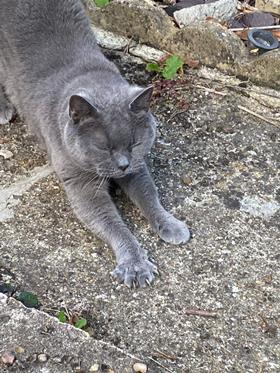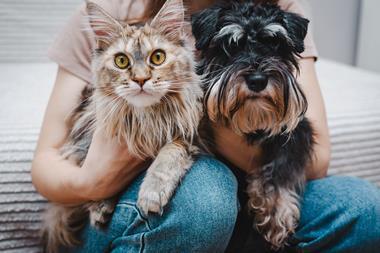’Nobody wants a sick pet, it’s bad for the pet and it’s bad for pet parents,’ says chief marketing officer
By Clare Ruel
Around two months ago, my Russian Blue cat was diagnosed with type two diabetes and it has been a real learning curve.
For example, I have had to change her diet, keep to strict feeding times and blood tests as well as administer daily insulin injections.

For cats, type two diabetes is caused by abnormalities in the pancreas and symptoms include weight loss, despite a good appetite, as well as frequent thirst and urination.
While certain cat breeds such as Russian Blue, Norwegian Forest Cat and Abyssinian are more prone to contracting the disease, there is always something that pet owners can do to get a handle on this.
But why is this relevant?
Back in October, ManyPets announced that it was launching a national campaign to raise awareness about pet obesity as well as an in-depth whitepaper dubbed The Why Weight?, which surveyed 2,000 pet parents and insights from pet professionals.
When asked why the report focused on pet obesity, Ryan Wheaton, global brand director and UK chief marketing officer, told me that it “leads to many different illnesses or exacerbates existing ones”.
It came after the firm identified that pet parents were paying an average of £682.65 for a diabetic cat or dog – my veterinary bills, for example, average about £400 a month.
Wheaton said that although the MGA’s main role is “help pet parents that paid for the treatment when their pets get sick”, the firm also wants to “help pet parents prevent their pet getting sick”.
He said: “Nobody wants a sick pet, it’s bad for the pet, it’s bad for pet parents and ultimately, it’s bad for us as a business.
”So, we see it as part of our responsibility to educate.”
Education
Educating pet owners about their pet’s health can be likened to the way the cyber insurance market has looked at educating firms and individuals as a preventative measure to attacks.
For ManyPets, the MGA has an in-house vet to offer professional opinion on pet health, which is done via YouTube videos, for example.
And while my cat is not overweight, diet can also lead to illness, which is also something the firm’s report tries to educate pet owners on in a bid to reduce claims.
Read: Consumers lack understanding of what is included in pet policies
Read: Luisa Barile: Bought By Many set to rival Lemonade as it takes on US market and pet health
Explore more risk management-related content here or discover other analysis stories here
It revealed that only 53% of cat owners knew the certain amount of food they should feed their pet daily, while the figure rose to 74% for dog owners.
Cat owners were also more guilty of lacking portion control, compared to 36% for dogs.
Meanwhile, the report highlighted a lack of education with treats, which can be calorie-laden or unhealthy and marketed as “healthy”.
For example, most dry cat food and some wet food often includes grains unless it specifies otherwise on the packet – grains in general can be bad for diabetic cats as it compounds the issue.
Therefore, a high protein, low carb and grain diet is advised.
Data
While such education can be key, one of the issues the pet insurance market in general has faced is a lack of data to help.
Back in 2016, data insurance solutions insurtech Crif were approached by multiple pet insurers about data sharing in this line to supplement claims.
Karl Pearse, sales consultant and pet insurance specialist at Crif UK, said that the firm worked with pet insurers to figure out what needs they had, as well as market constraints.

Pearse added: “[When it comes to] specifics on number of policies sold and types of pet claims, there’s sources out there, but it’s quite difficult.
“Up until Crif’s involvement data wasn’t shared, so each insurer would only know their specific data but no wider industry stats. They [insurers] have realised that by sharing data it helps validate claims.”
It also helps identify fraud, which Pearse has a background in. He said that due to constraints and regulation in other lines of business, fraud in pet insurance has risen – therefore this is where data helps.
To conclude, data in pet insurance is key to validating claims, but also another layer has emerged with pet insurers focusing pet health to prevent claims happening in the first place, which equals happier pet owners, pets and insurers.
I do feel, however, that there is more to do in this line in terms of educating pet owners on pet health – if this information was available alongside my own pet insurance policy, I absolutely would have taken the advice, as once a cat is diagnosed with an illness, for the most part, it becomes a pre-existing condition meaning that it cannot be claimed for thereafter.
And data sharing is just the beginning of trying to address this interconnected issue.To my mind, ManyPets, Waggel and Crif are taking the right approach, but more needs to be done on specific illnesses such as cat diabetes.
Hosted by comedian and actor Tom Allen, 34 Gold, 23 Silver and 22 Bronze awards were handed out across an amazing 34 categories recognising brilliance and innovation right across the breadth of UK general insurance.



















































No comments yet